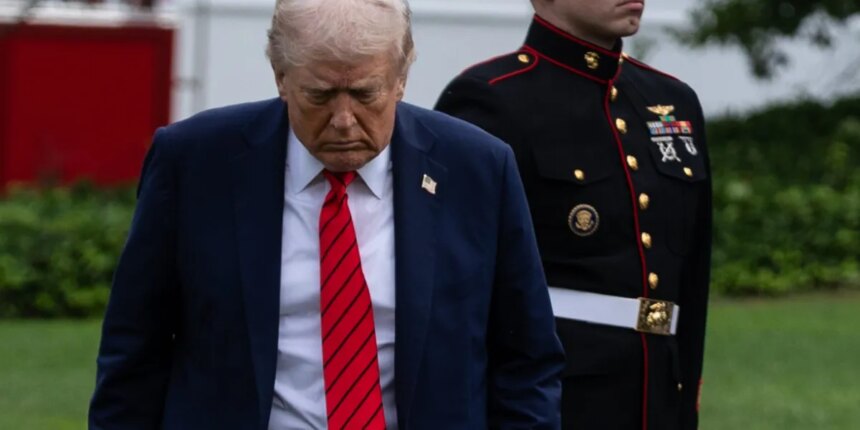Investors are cautiously optimistic about a potential stock market rebound following a significant downturn stemming from renewed trade tensions between the U.S. and China. The S&P 500 experienced its largest loss since April on Friday, prompting concerns among market participants.
In an attempt to mitigate the anxiety, President Donald Trump took to Truth Social on Sunday, reassuring the public after announcing a new 100% tariff on imports from China, coupled with restrictions on U.S. software exports. In his message, Trump stated, “Don’t worry about China, it will all be fine! Highly respected President Xi just had a bad moment. He doesn’t want depression for his country, and neither do I. The U.S.A. wants to help China, not hurt it!!!”
Adding to this conciliatory tone, Vice President JD Vance expressed a willingness to engage in reasonable negotiations with China during an appearance on Fox News’s Sunday Morning Futures. Vance suggested that Trump holds a strategic advantage, claiming “far more cards” than Beijing in these negotiations.
The change in rhetoric marks a departure from Trump’s earlier aggressive stance, where he condemned China’s new export controls on rare earth materials—key components crucial across various industries. Michael Brown, a senior research strategist at Pepperstone, noted that market participants are likely viewing the tariff announcement as a potential negotiating tactic rather than a definitive escalation in trade tensions. “Market participants appear to be leaning into the TACO trade once more,” Brown commented, referencing the belief that Trump often backs down from maximalist threats.
In response to these developments, futures linked to the Dow Jones Industrial Average increased by 344 points, or 0.75%. The S&P 500 and Nasdaq futures both saw healthy gains as well, rising by 0.94% and 1.2%, respectively. Additionally, the yield on the 10-year Treasury fell sharply, and other commodities such as gold and oil experienced upticks amid a more stable outlook.
Historically, Trump has enacted high tariffs in the past, only to ease them to facilitate negotiations with global trading partners. This pattern, referred to as the “escalate to de-escalate” strategy by Brown, could imply that the new tariffs, effective November 1 and raising the overall tariff level to 130%, may similarly serve as a bargaining chip.
Market analyst Ed Yardeni shared a more optimistic perspective, suggesting that a full-blown trade war could provoke dire consequences for both the U.S. and Chinese economies. He anticipates that both nations will ultimately find a way to de-escalate tensions for the sake of global economic stability.
Conversely, China’s government has taken a firmer stance, with the commerce ministry declaring that while it does not desire a tariff war, it is fully prepared for one. The ministry reiterated that the recent export controls on rare earths are an exercise of China’s sovereign rights, not a complete prohibition of shipments.
Experts have highlighted that China’s new rare earth policies mark a significant shift in its global economic strategy. Dali Yang, a political science professor at the University of Chicago, emphasized the implications of such a move, suggesting it reveals the potential framework of a China-led global order that heavily relies on strategic materials and technologies.
As the global marketplace reacts to these fluctuating trade dynamics, both investors and analysts are closely monitoring future developments, remaining aware of the precarious balance between confrontation and negotiation that characterizes the ongoing trade relationship between the two largest economies in the world.







